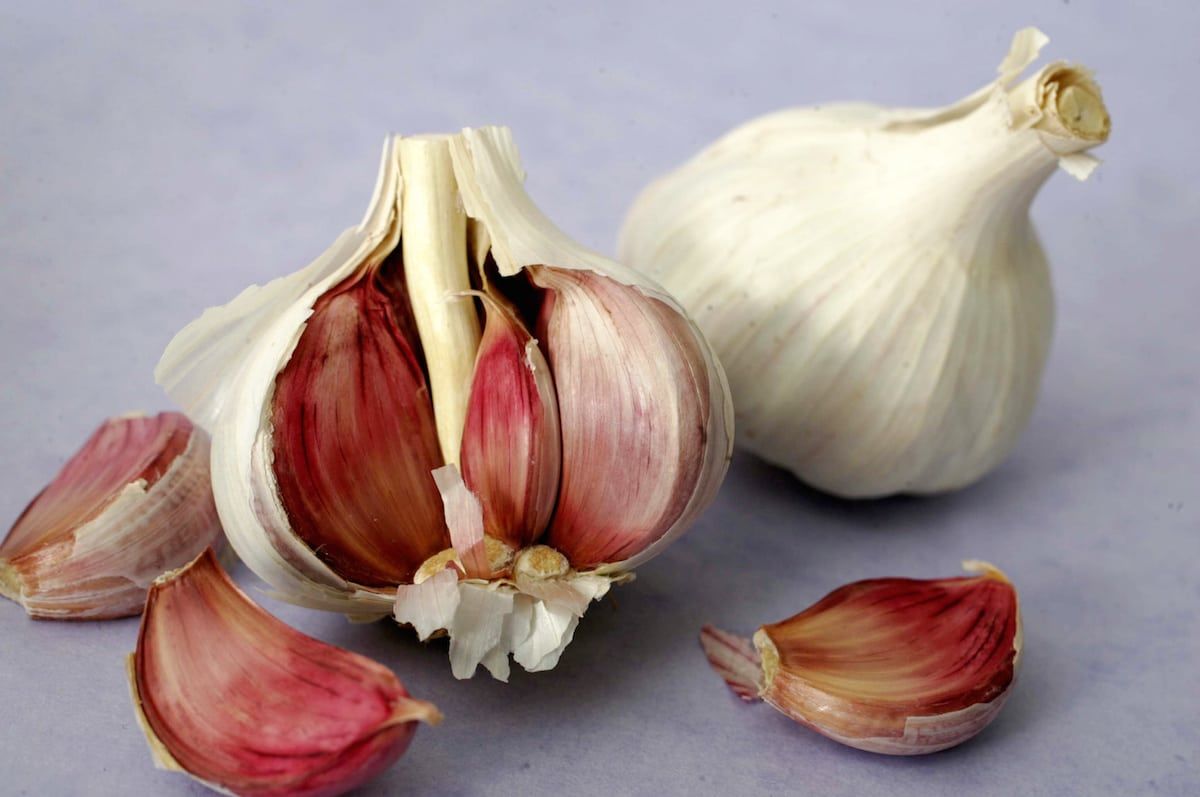
Garlic could ward off hospital superbugs, a new study revealed.
Ajoene, an active sulphurous compound found in the pungent vegetable, when combined with antibiotics helps break down a bacteria’s defences.
Scientists hope the breakthrough could fight incurable cystic fibrosis and chronic wounds in diabetics as well as tackling MRSA and common hospital infection P. aeruginosa.
University of Copenhagen researchers found ajoene destroys the biofilm of resistant bacteria and make antibiotics work again.
It does not kill the bacteria but disrupts it communicating with others by suppressing a gene.
Blocking that communication prevents the cells from taking collective action, a mechanism known as quorum quenching .
Assistant Professor Tim Holm Jakobsen said: “We really believe this method can lead to treatment of patients, who otherwise have poor prospects.
“Because chronic infections like cystic fibrosis can be very robust.
“But now we, together with a private company, have enough knowledge to further develop the garlic drug and test it on patients.”
The new study builds on previous work that since 2005 showed garlic’s ability to inhibit bacteria and in 2012 pinpointed ajoene as being responsible.
The findings published in the journal Nature Scientific Reports documents ajoene’s ability to inhibit small regulatory RNA molecules in the two types of bacteria.
Prof Jakobsen from the Costerton Biofilm Center at the Department of Immunology and Microbiology added: “‘The two types of bacteria we have studied are very important.
“They are called Staphylococcus aureus and Pseudomonas aeruginosa.
“They actually belong to two very different bacteria families and are normally fought using different methods.
“But the garlic compound is able to fight both at once and therefore may prove an effective drug when used together with antibiotics.”
Previous studies found garlic appears to offer the most powerful, naturally occurring resistance to bacteria.
In addition to inhibiting the bacteria’s RNA molecules, the active garlic compound also damages the protective slimy matrix surrounding the bacteria, the so-called biofilm.
When the biofilm is destroyed or weakened, both antibiotics and the body’s own immune system are able to attack the bacteria more directly and thus remove the infection.
Prof Jakobsen said: “A strategy that target expression of virulence factors and not bacterial growth could be of benefit in relation to the chemotherapeutic resistance we have seen for decades with the conventional antibiotic therapy.
“The key to success for P. aeruginosa and S. aureus as pathogens are their well-developed mechanisms of immune evasion including their capacity of biofilm formation that mitigates the impact of antimicrobial strategies based on conventional antibiotics.
“Antivirulence strategies that reinstate proper action of the cellular immune system and conventional antibiotics could therefore potentially become a stepping-stone in the design of future, chemotherapeutic treatment regimens.”
In 2012 the researchers took out a patent on the use of ajoene to fight bacterial infections and Neem Biotech bought the licence to use the patent.
Their medical product, NX-AS-401, which aims to treat patients with cystic fibrosis, is set to be used in clinical trials within the next two years.
P. aeruginosa is a relatively common type of infection in UK hospitals as it can survive in harsh environments.
It is an opportunist bug attacking patients with weakened immune systems such as cancer patients, newborns and patients with severe burns, diabetes mellitus or cystic fibrosis.
For example if it enters lung tissue of a cystic fibrosis patient, it can cause a form of pneumonia.
Staphylococcus known as staph infections is responsible for MRSA and is incredibly hard to treat and can be fatal because it is resistant to widely-used antibiotics.
About 30 per cent of people carry the Staphylococcus aureus bacteria on skin – or even in the nose – without realising.
However it can invade the body’s bloodstream and release poisonous toxins – killing up to a fifth of infected patients.
https://www.thelondoneconomic.com/food-drink/host-vegan-christmas/24/11/